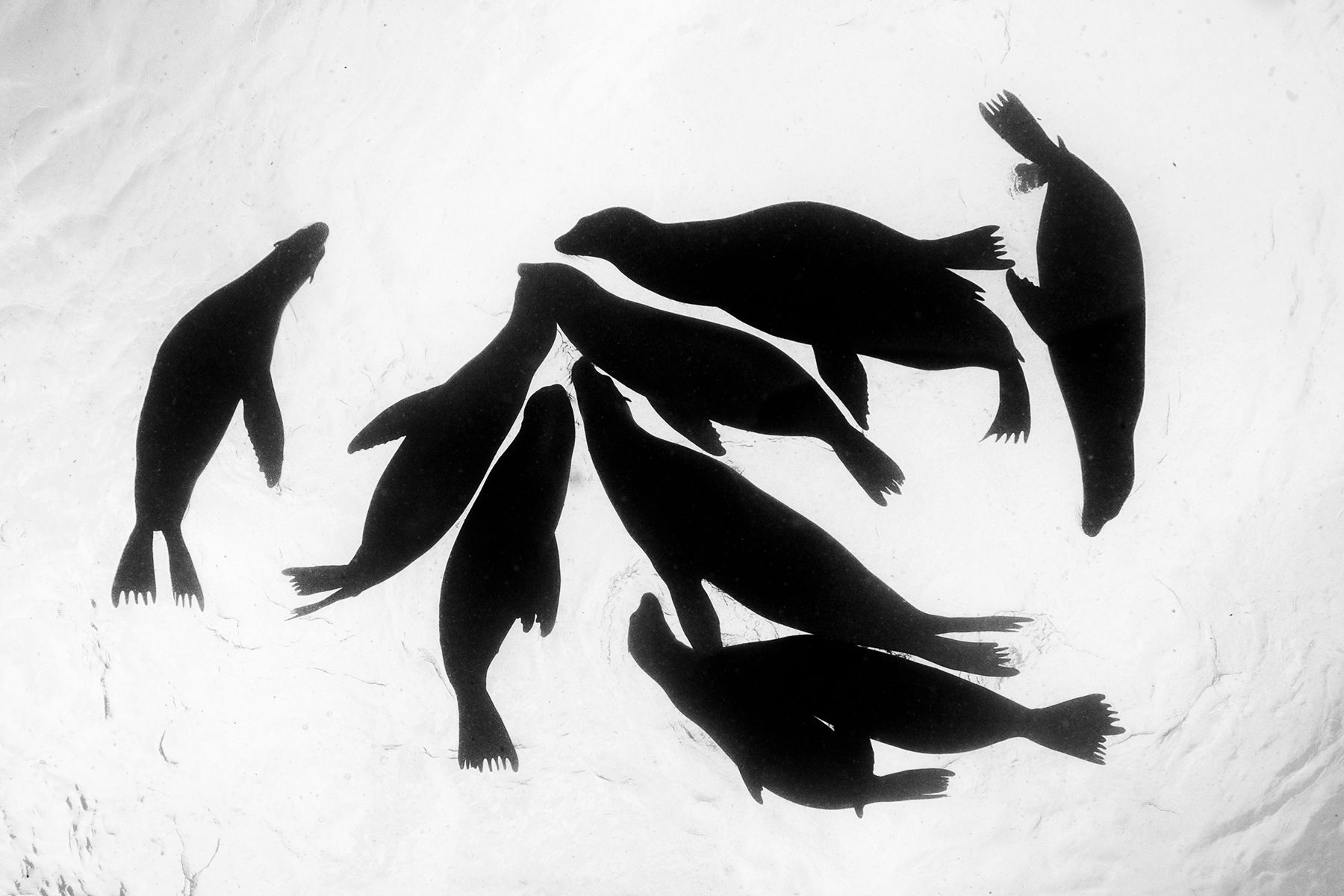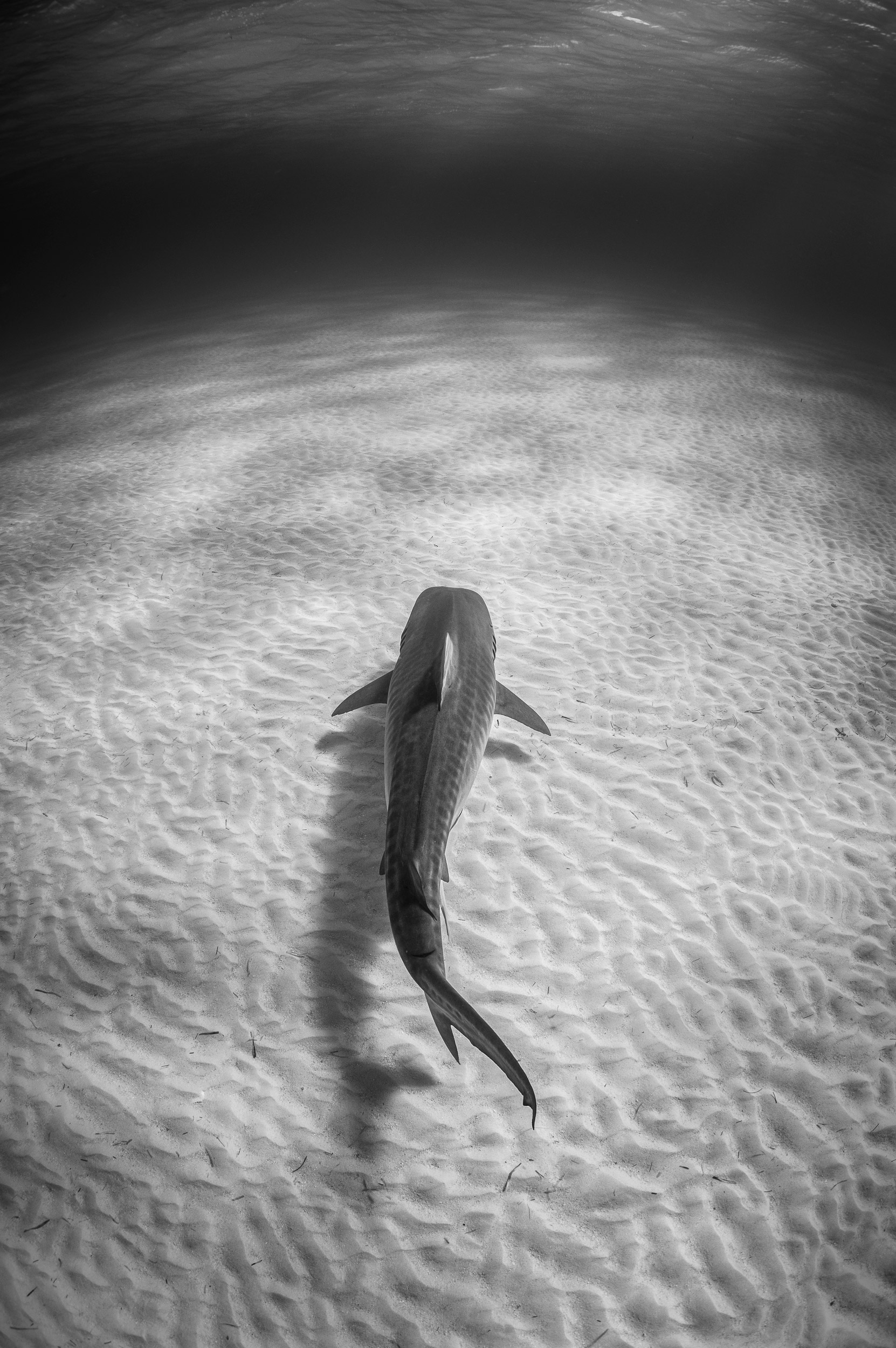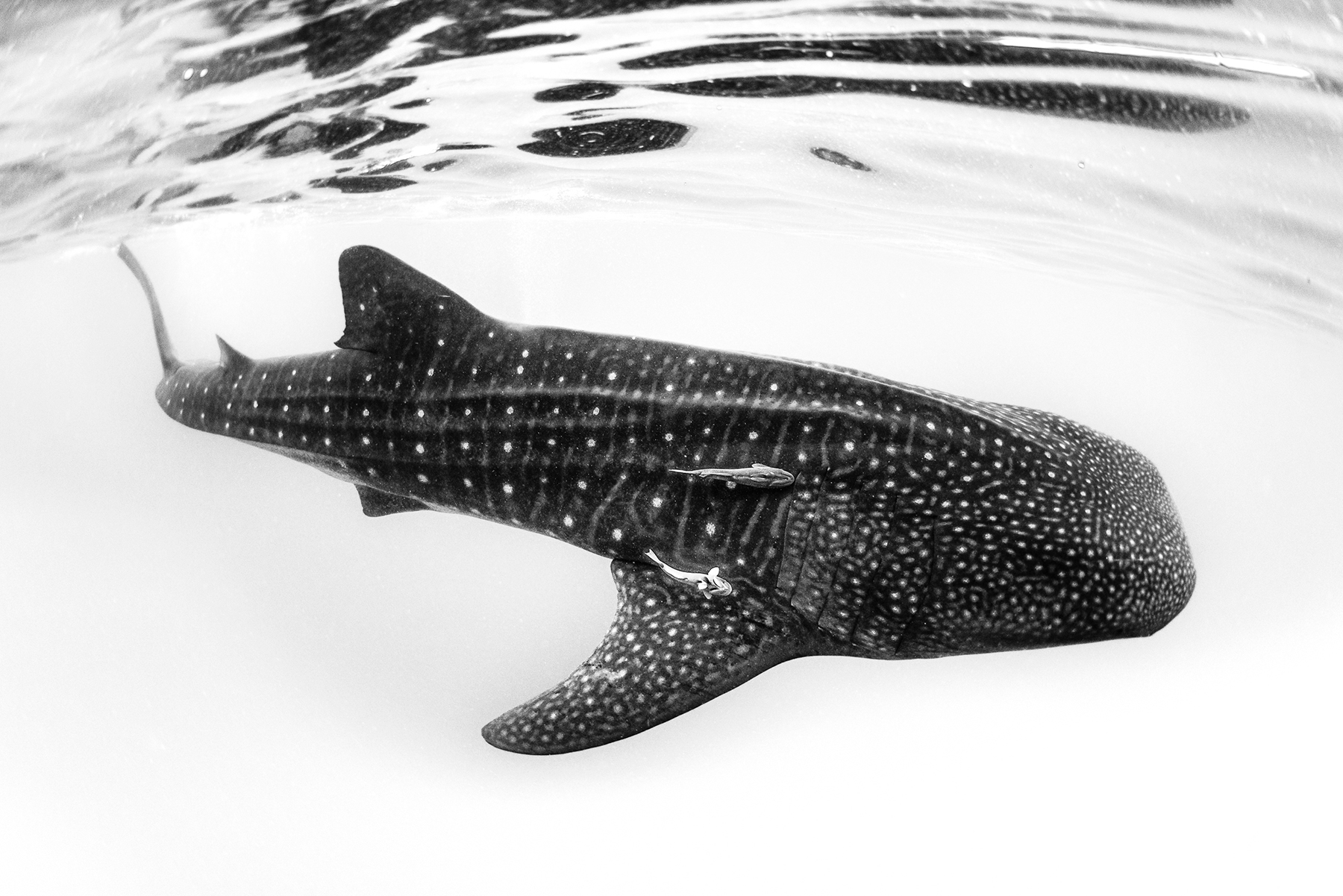
Share
↑ A tiger shark gliding over sunlit sand. The front light creates a smooth, natural look—no strobes needed.
Words and Images by Jason Bradley | March 2025
Let’s be real—underwater photography can feel like a whole production sometimes. But what if I told you it doesn’t have to be? By ditching underwater strobes and relying on the natural light show happening right above you, you can create stunning images with a fraction of the effort.
Less gear, more freedom, and, best of all, no wrestling with artificial lighting. Here’s how to make the most of it while keeping things light (pun intended).
The beauty of working with ambient light underwater is that it allows you to immerse yourself in the moment fully. Without the hassle of balancing multiple light sources, you can spend more time observing animal behavior, anticipating the perfect shot, and framing things just right. This is particularly useful when photographing fast-moving subjects like sea lions, dolphins, or schooling fish that don’t wait around for you to tweak your settings.
One of the best parts of shooting with ambient light? You don’t need a suitcase full of equipment. No strobes or extra cables—just you, your camera, and the sun doing its thing. This means you can swim more freely, more streamlined, and react to moments as they happen, focusing on what matters: composition, storytelling, and enjoying your dive. Shooting with minimal gear also helps you stay in the moment rather than fumbling with strobe arms and cables.
Have you ever seen those dreamy, high-contrast shots where the subject is all shadowy and dramatic against a bright background? That’s backlighting at work. Position your subject between you and the sun, and boom—you’ve got a striking silhouette. Then, simply balance the shapes and patterns that reveal themselves in front of your lens. It’s an easy trick that packs a serious visual punch, just like the sea lions in the image below where the contrast makes their forms pop beautifully against the light. The key is finding the right angle—experiment with positioning yourself slightly lower than your subject to maximize the effect.

Another bonus of backlighting? It’s an excellent way to reduce distractions in the frame. Instead of focusing on background details, the viewer’s eye is immediately drawn to the subject’s form and movement, making the image more dynamic and engaging.
Unlike backlight that emphasizes shape, front light offers something different. If you position yourself between the sun and the subject, you can capture richer tonality, textures, and details. The trick is to find the right balance—avoiding overexposed highlights while still retaining detail in shadows. And don’t forget to keep an eye on your camera’s histogram to make sure you’re exposing correctly. Expose the histogram to the right without clipping highlights in critical areas of your composition.
This setup works wonders, especially in clear water. And if you really want to finesse it, shoot over a sandy bottom—it bounces light back up and softens shadows for a naturally diffused look. Just like the tiger shark in the image below where the light works in harmony with the scene, bringing out the shark’s shape, the patterns on its back, and the texture of the sand without harsh contrast.

Another trick? Pay attention to the time of day. Midday sun can be a bit harsh, so shooting earlier or later in the day can diffuse the light, offering you a more even exposure. Cloud cover can also act as a natural diffuser, helping to eliminate overly bright highlights and deep shadows.
Deep dives are cool and all, but if you’re shooting with ambient light, the shallows are where the magic happens. There’s simply more light up there, meaning better colors, more details, and an easier time nailing exposure. The whale shark below is a perfect example—swimming just below the surface, bathed in natural light, showing off its signature spotted pattern in all its glory.

The added benefit? Shallower water means you can shoot for longer without worrying about running out of air or dealing with complex decompression schedules. Plus, the variety of marine life is often richer in these upper zones, so you’ll have plenty of subject matter to choose from.
Monochrome photography isn’t just about removing color—it’s about distilling an image down to its core elements. Shapes, contrast, and textures take center stage, creating a more timeless and impactful composition. If you’re struggling with an image that’s not offering the right hue, try converting it to black and white. You might be surprised at how much more cohesive it becomes.
And let’s not forget about post-processing. Fine-tuning contrast and tonal balance in editing software can elevate a monochrome image even further. A simple tweak to highlights and shadows can add depth and mood, making an already striking photo even more compelling. Whether you’re working with high-contrast silhouettes or delicate tonal gradations, black-and-white photography has the power to bring out details that might otherwise go unnoticed.
Dive into these concepts with me: less gear, more creativity, and the freedom to let the ocean’s natural light take the lead. Experiment with different angles, embrace the unpredictability of wildlife, and, most importantly, have fun with it. The best underwater images aren’t just technically perfect; they tell a story, evoke emotion, and remind us why we fell in love with the ocean in the first place.
Get Annual Subscription